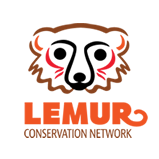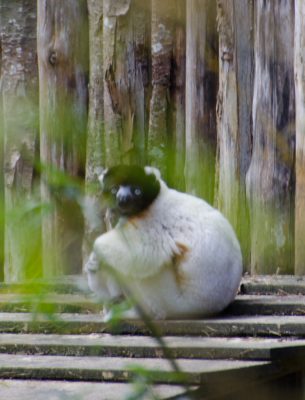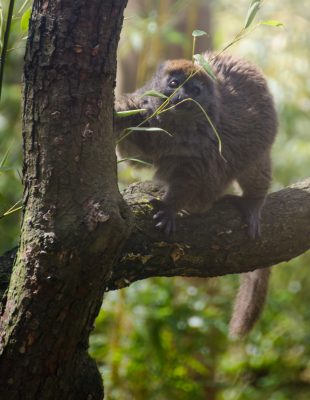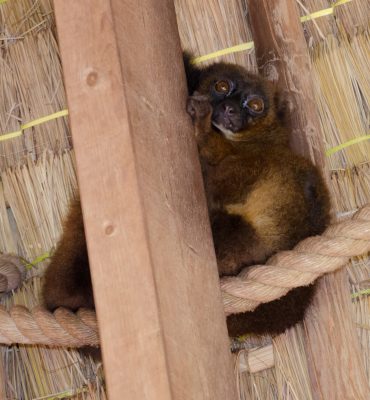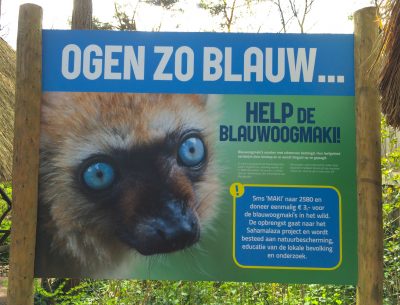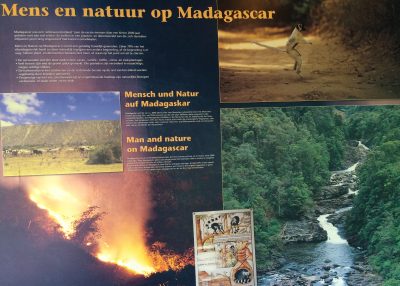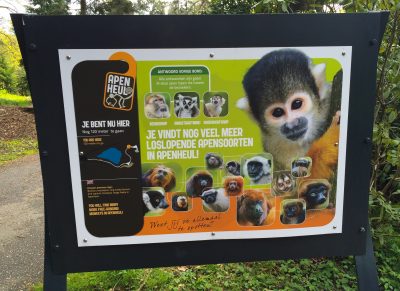
In May, I spent a day at the Apenheul Primate Park, located about an hour by train from Amsterdam in the Netherlands. Apenheul is a member of the European Association of Zoos and Aquaria. It opened in 1971 as the first zoo in the world where monkeys roamed free in forested areas and could also interact with visitors.
The Park Features 35 Primate Species and 7 Species of Lemurs
At first, Apenheul housed solely South American primates like woolly monkeys, spider monkeys, and tamarins. But now, they house a total of 70 species including other monkeys, apes, prosimians, birds, and more.
This includes 7 species of lemurs, most of which are free-ranging. At Appenheul, you can see the Alaotran gentle lemurs, crowned sifakas, ring-tailed lemurs, red ruffed lemurs, black-and-white ruffed lemurs, red bellied lemurs, and blue-eyed black lemurs.
Visitors to Apenheul follow winding, wooded trails around a lake. The founder, Wim Mager, believed it was important to for the animals to be as free-ranging as possible. This means the animals behave more naturally, and visitors can experience their natural behaviors.
Supporting Primate Conservation
Apenheul Primate Park houses a research center and actively supports conservation through the Apenheul Foundation. Visitors are encouraged throughout the park to donate to the Apenheul Foundation and support conservation through text message campaigns and donation bins. And, guests learn about the specific programs the foundation helps on the front lines of conservation.
The Apenheul Foundation supports LCN member AEECL and their work in Sahamalaza, Madagascar to save blue-eyed black lemurs from extinction. Below is a sign in the park asking visitors to support this work.
Educational Materials about Lemurs and Madagascar
Great zoos like Apenheul and LCN’s member zoos also help educate visitors. Educational materials teach us about animals, how they are unique, where they live, the threats the face, and how conservationists are working to protect them from extinction.
The educational materials throughout Apenheul’s walking paths are impressive. Large displays discuss the animals, their habitats, threats they face, and how conservationists are working to protect them and their habitats.
How to Help LemursEducational materials in zoos provide a key opportunity to engage visitors with science and conservation. With strong education programs, zoos like Apenheul turn visitors looking for a fun day at the park into conservation advocates. We can all help conservation efforts by donating, volunteering, and sharing our love for animals with friends and family.
